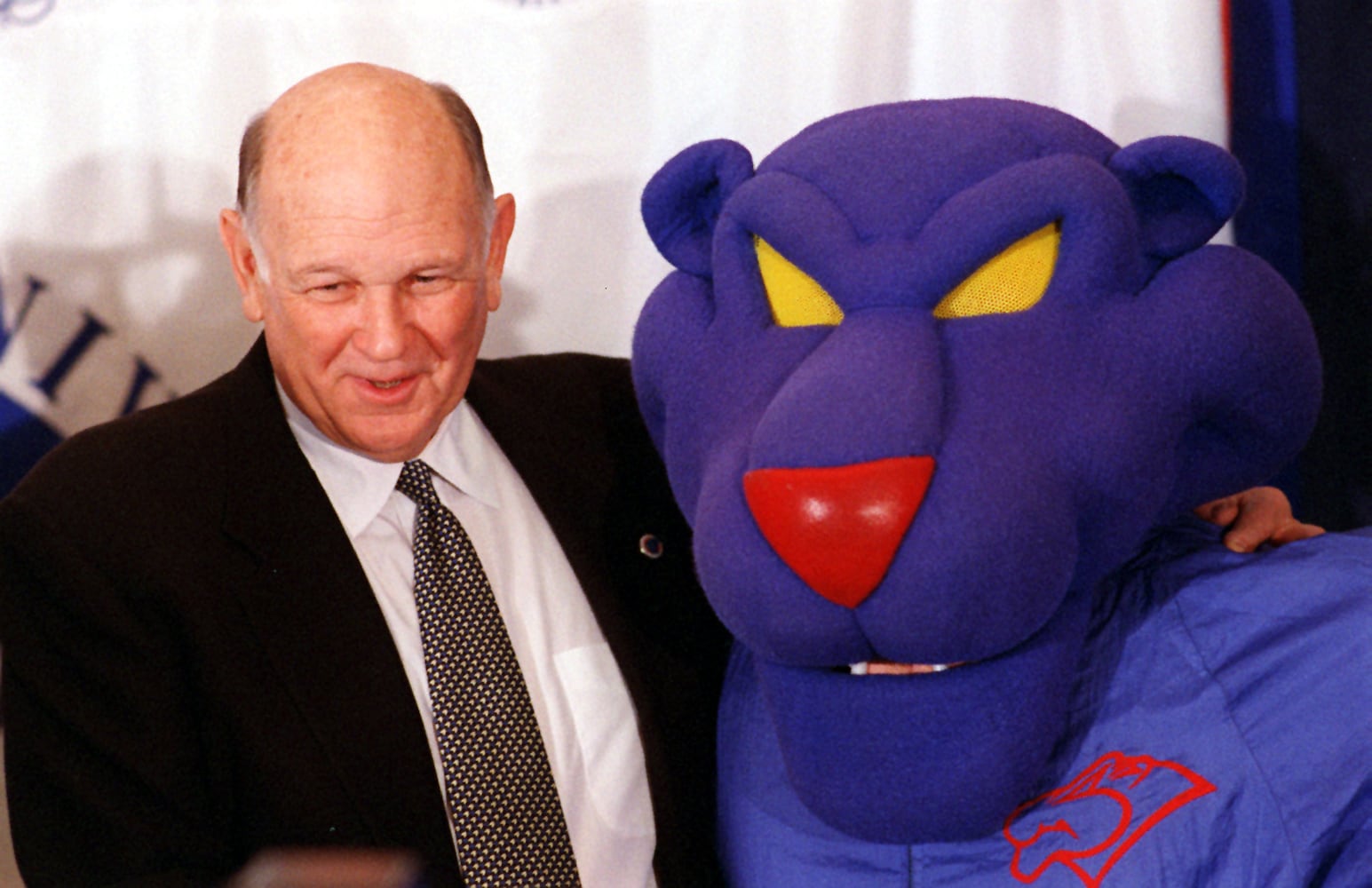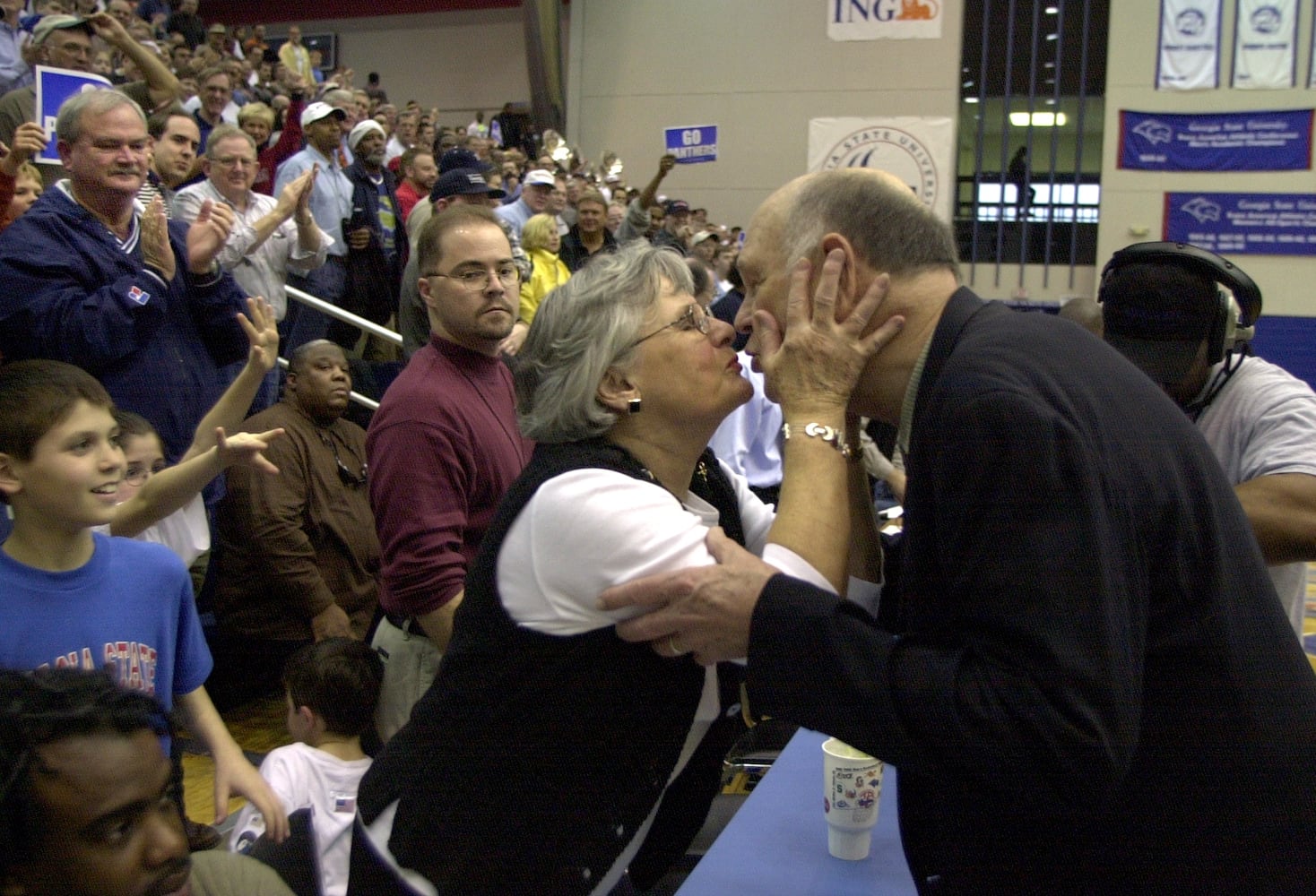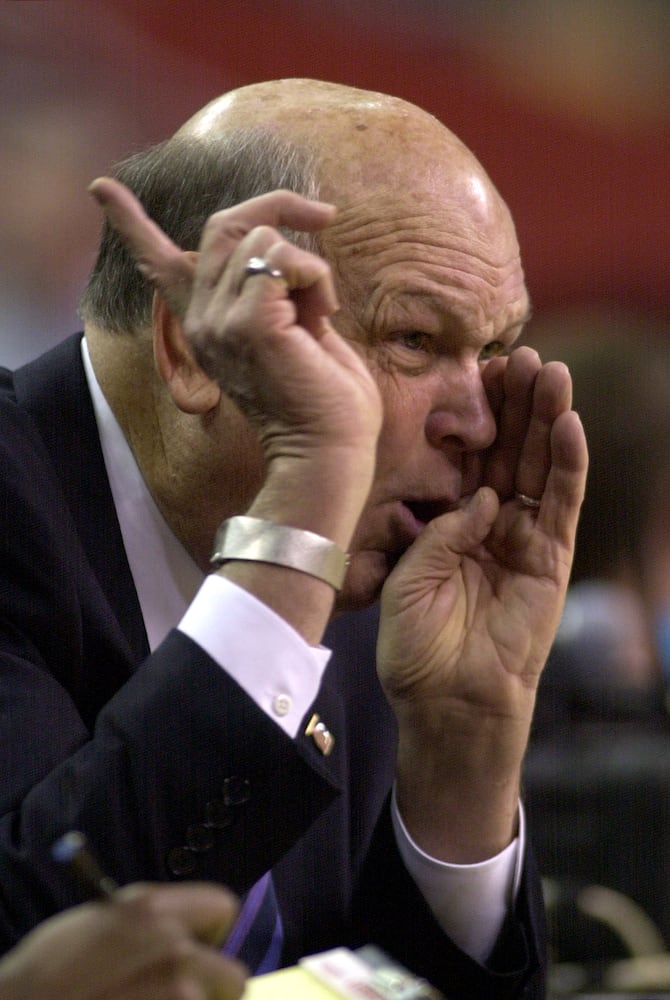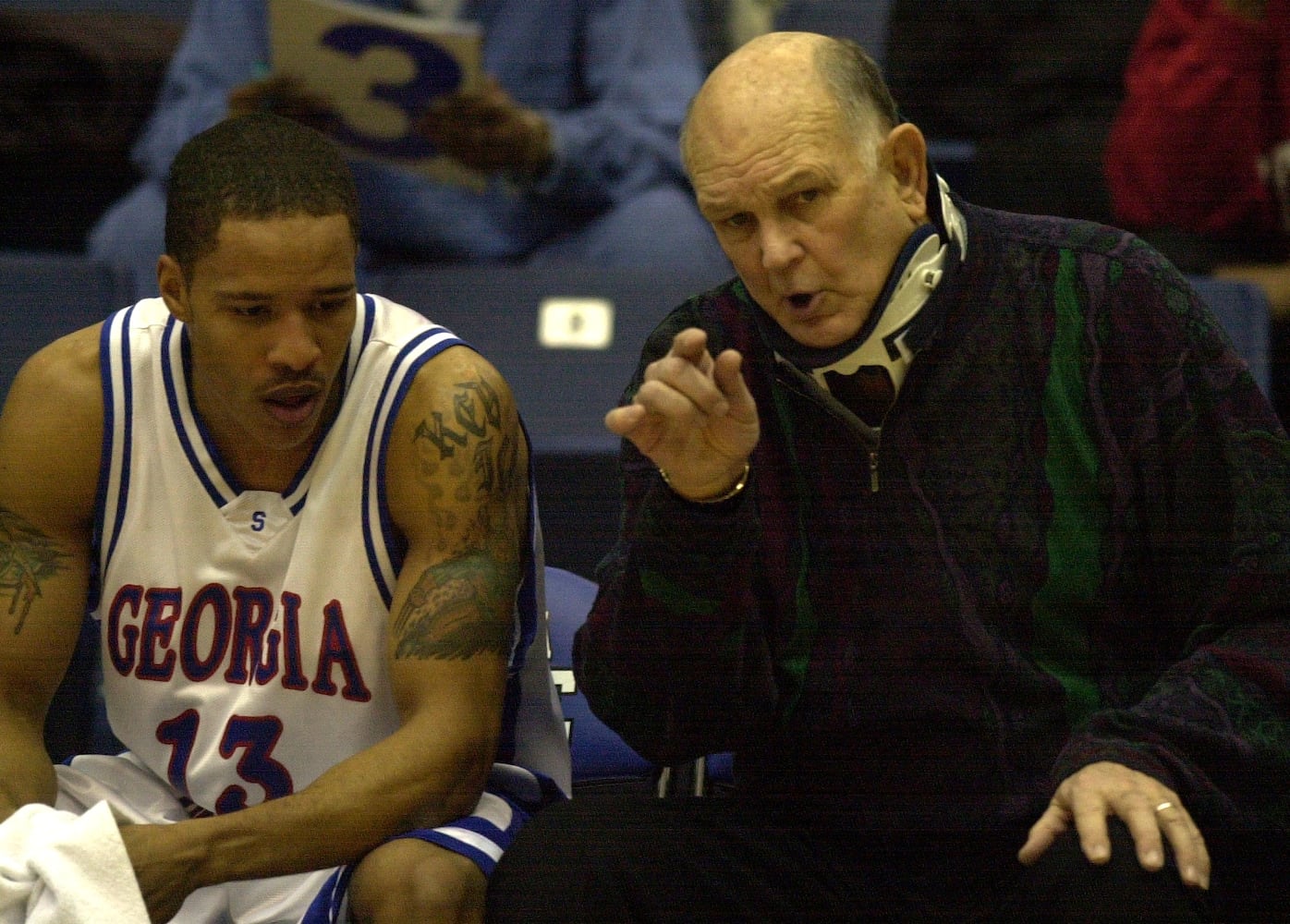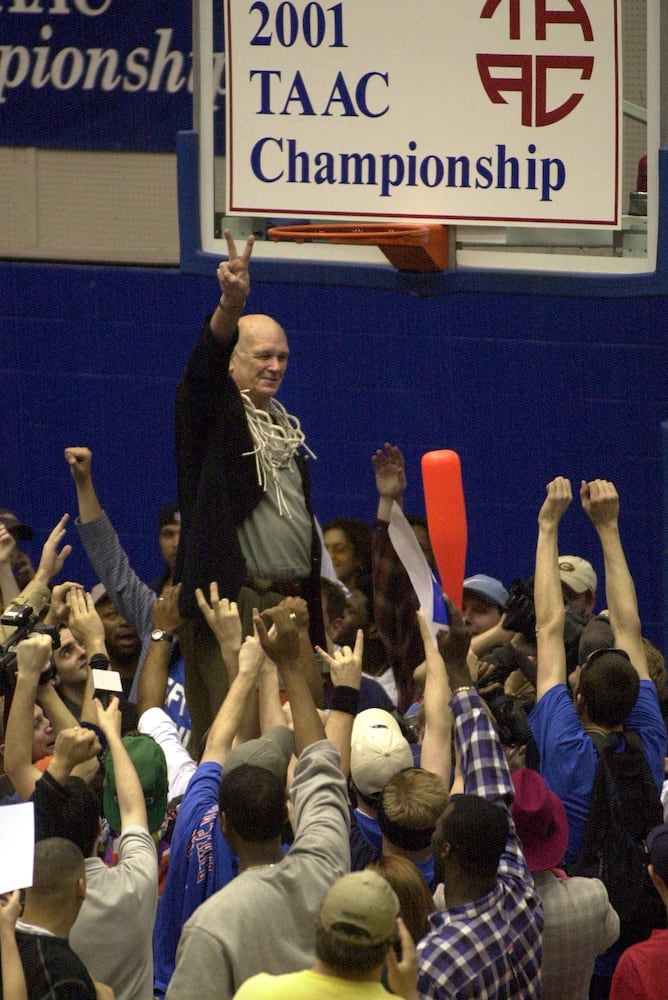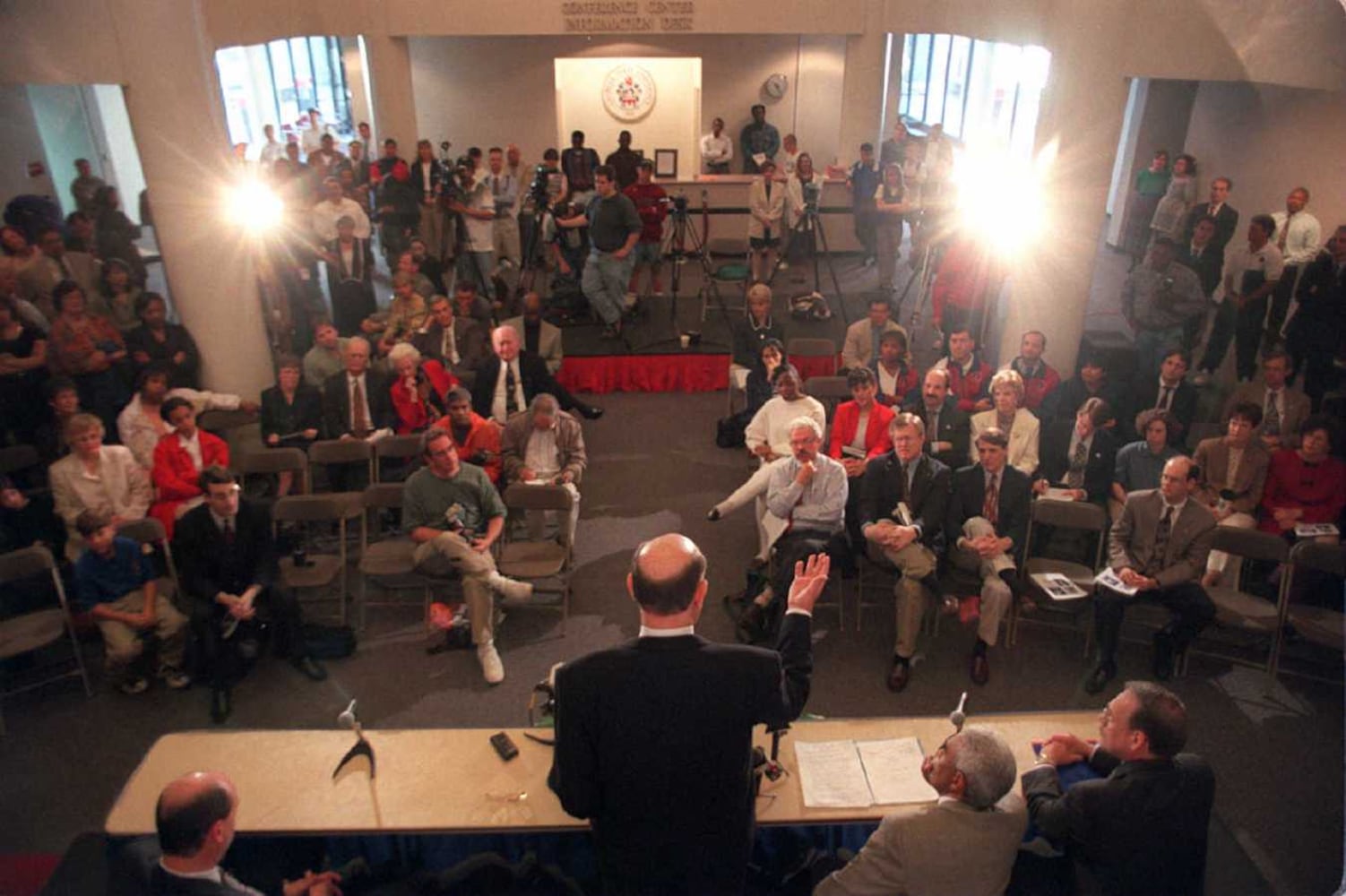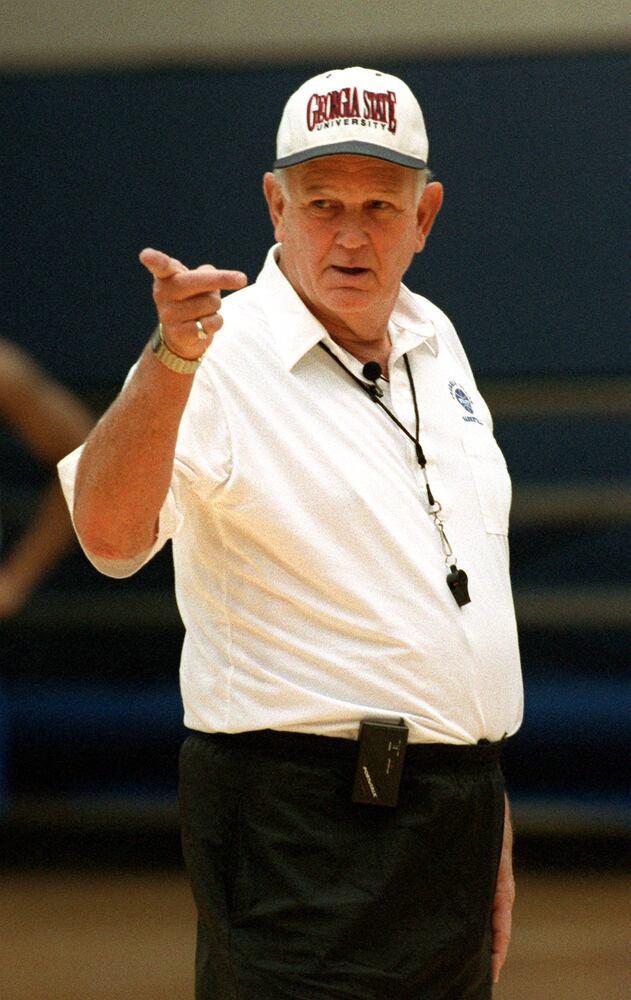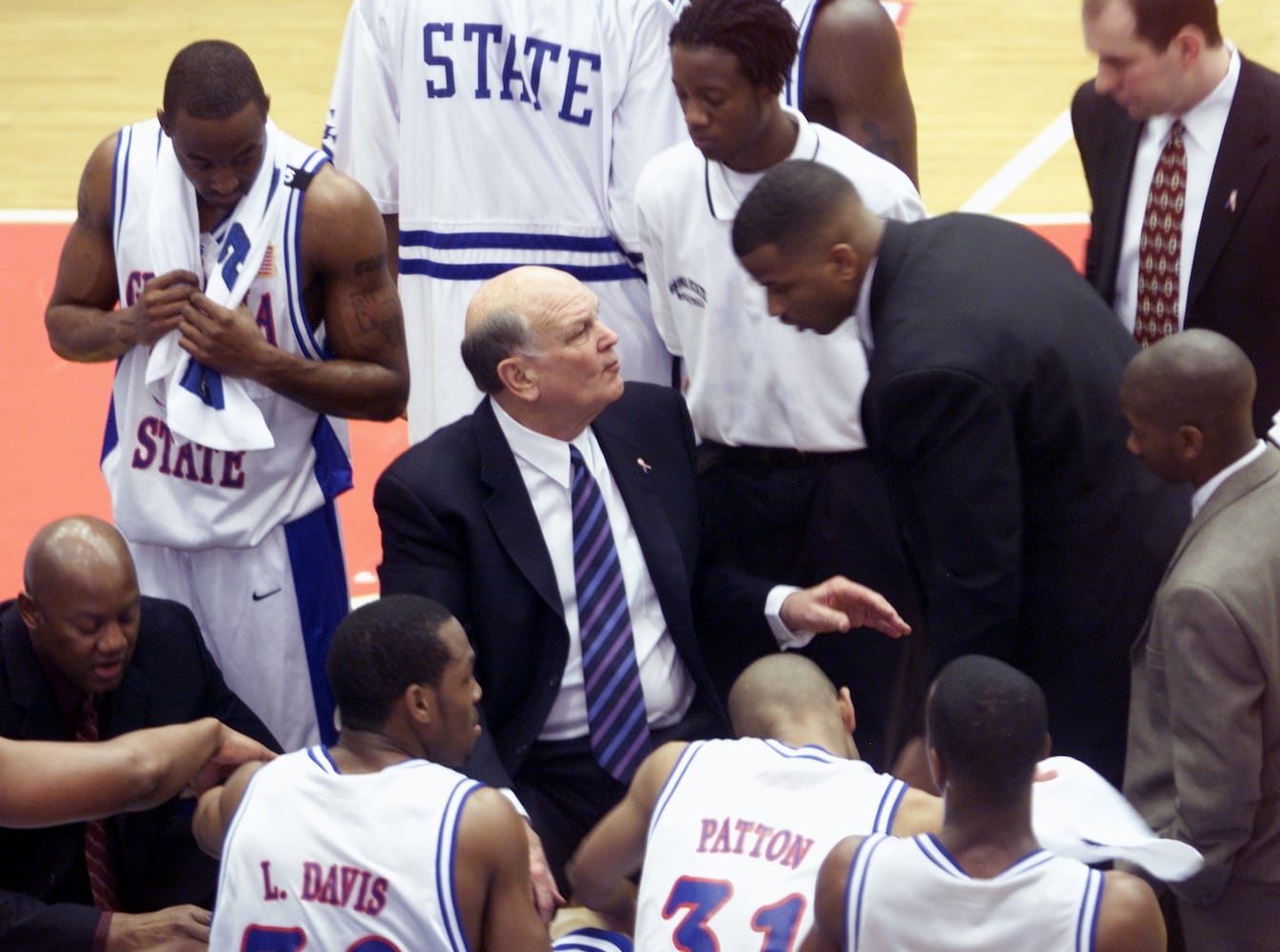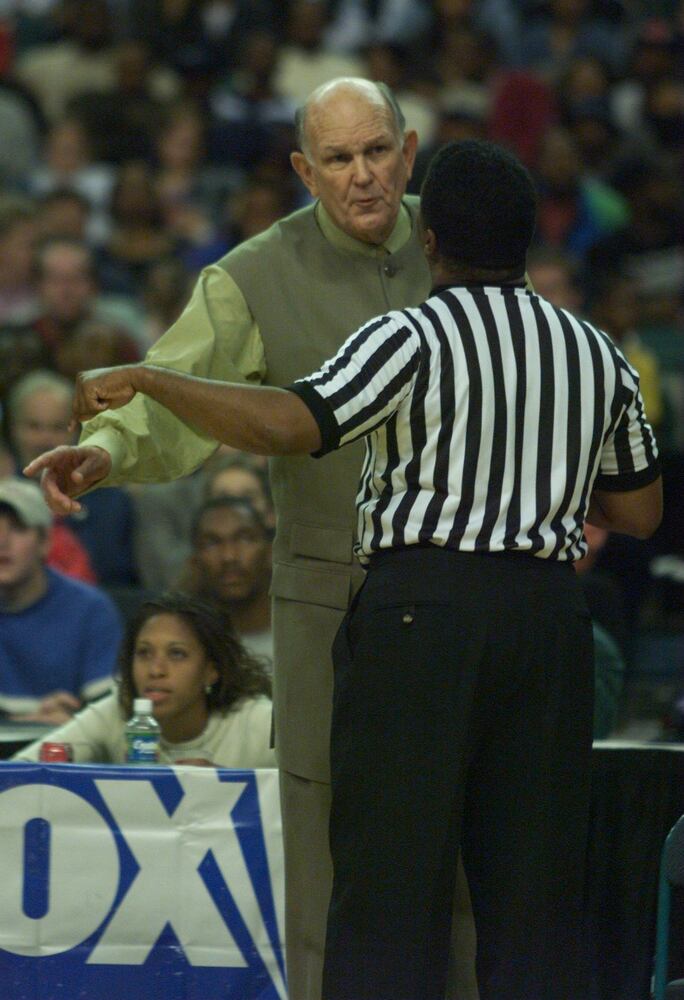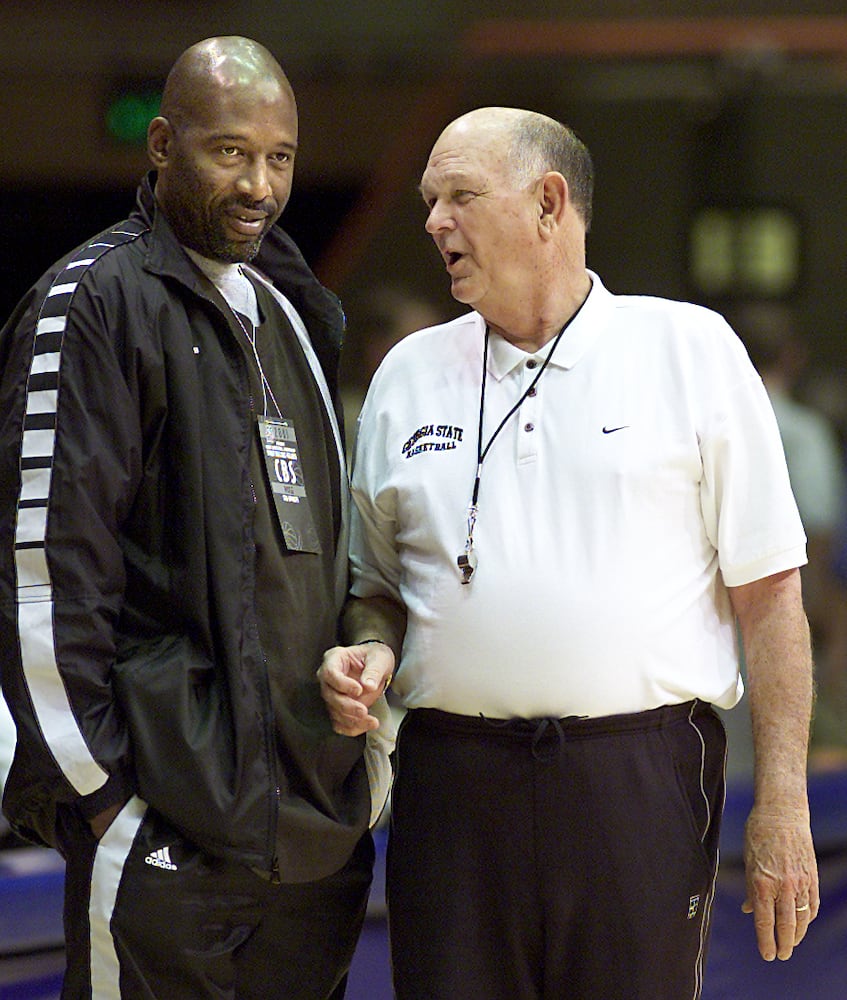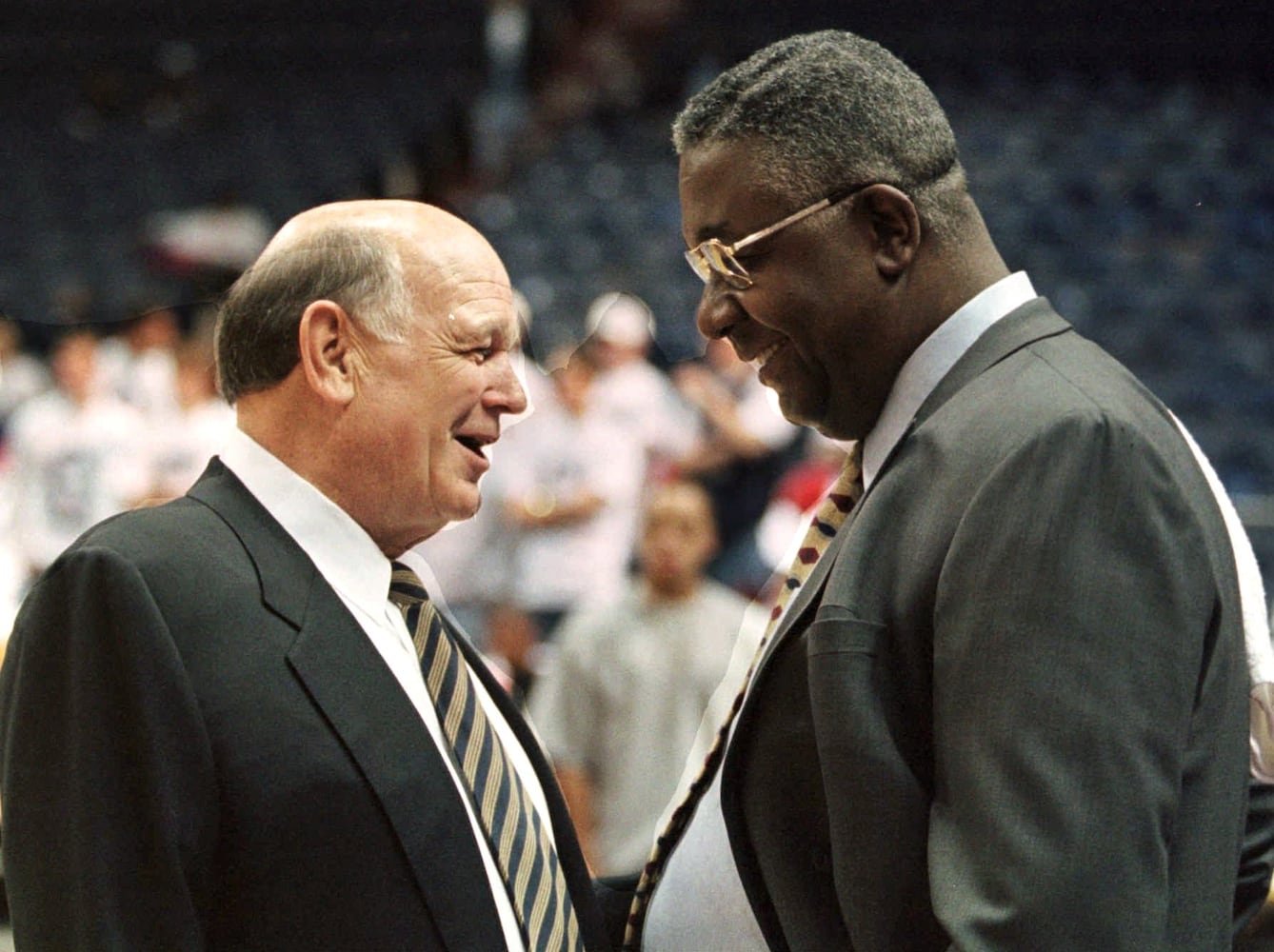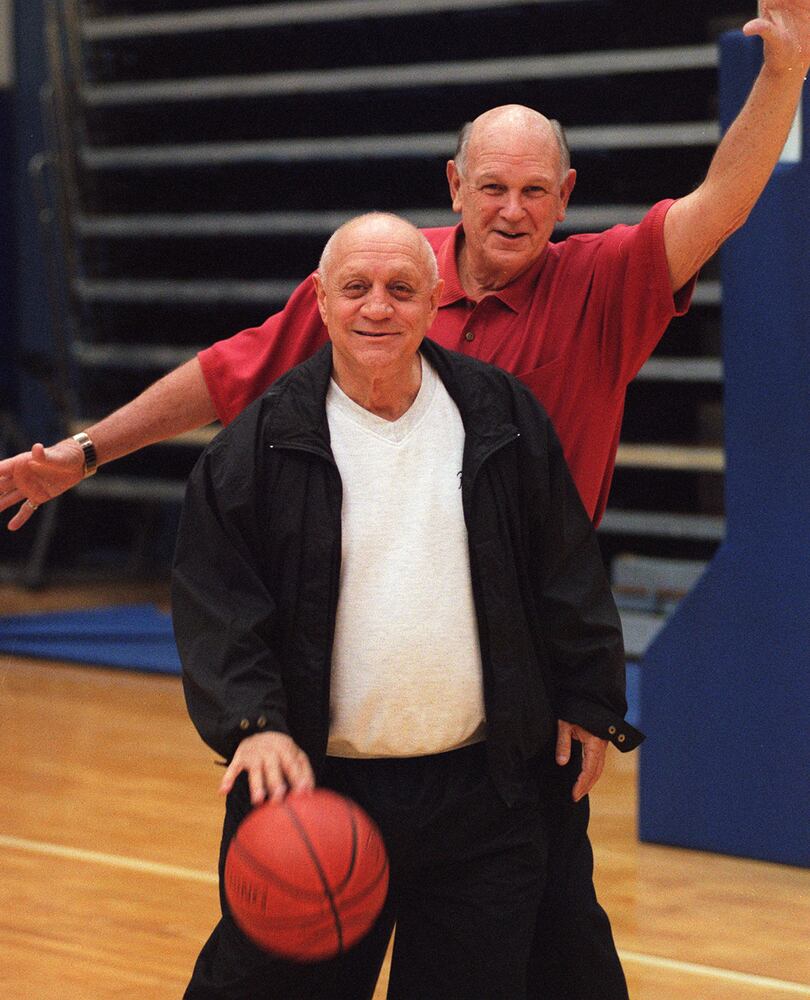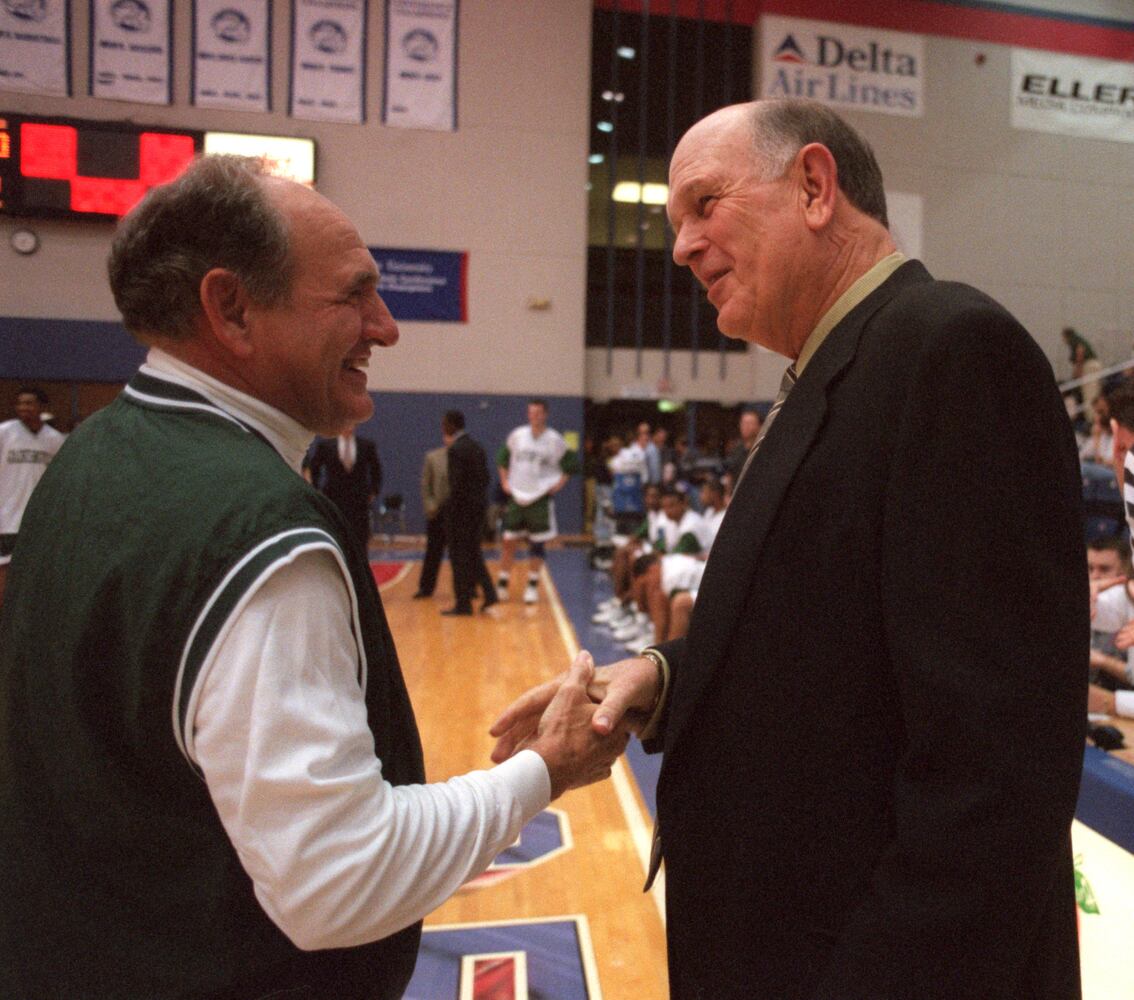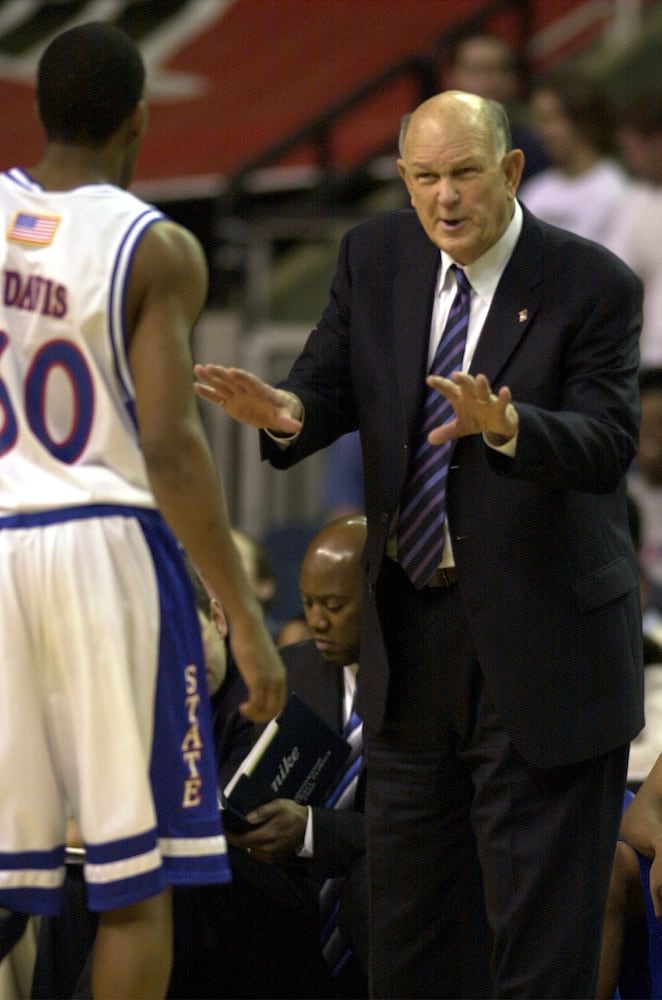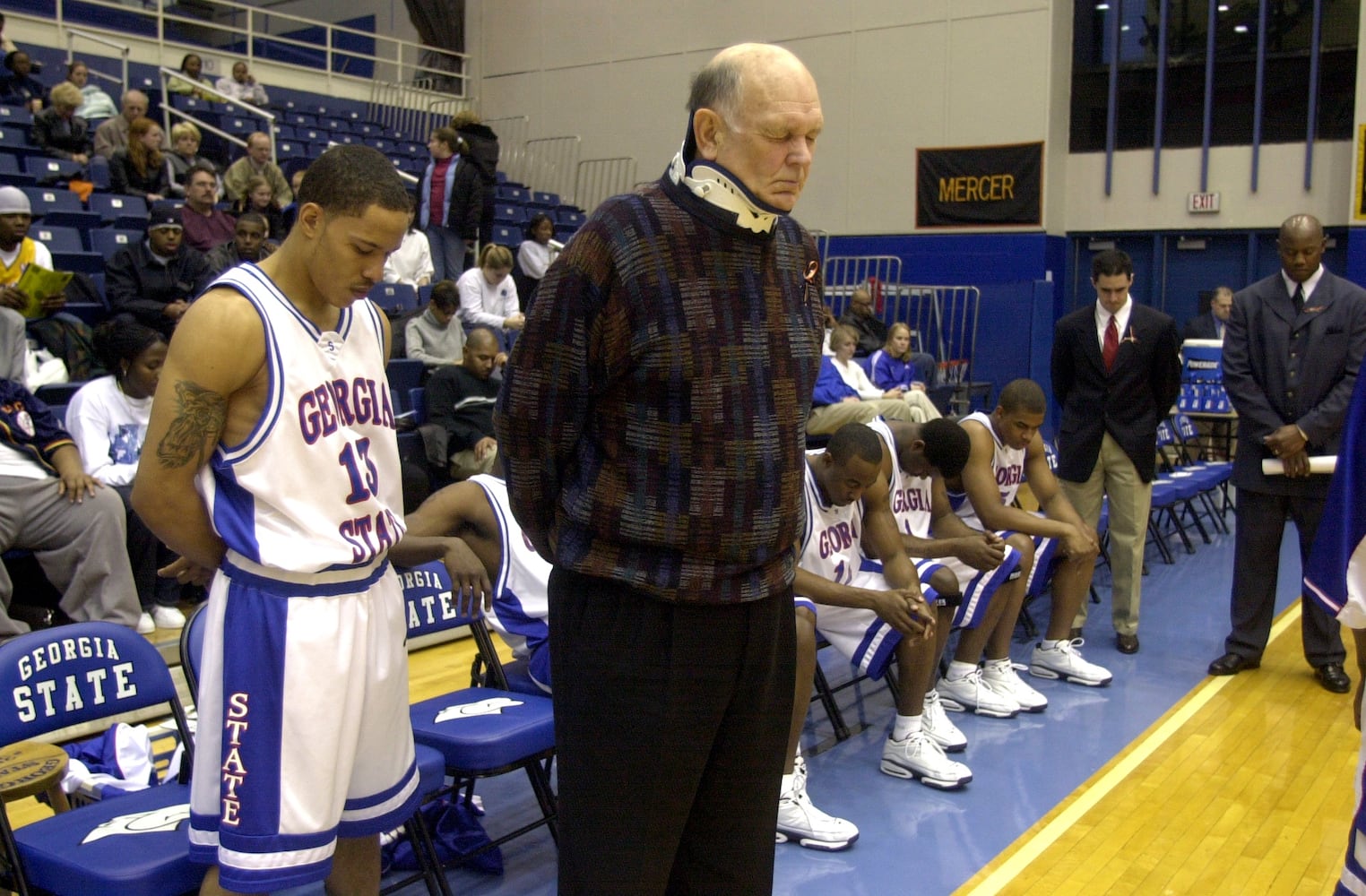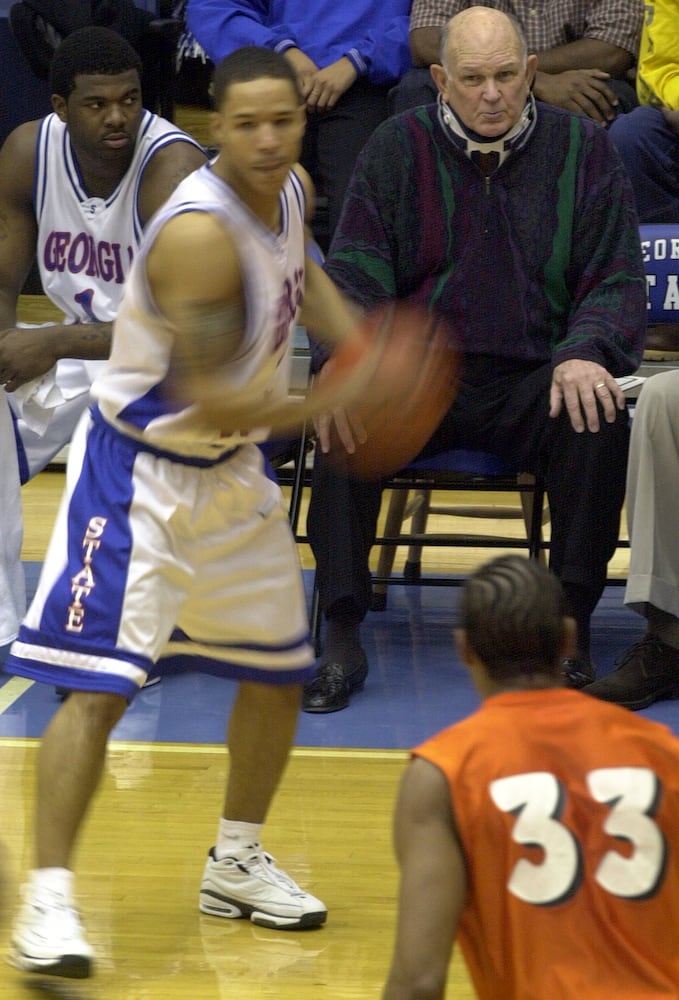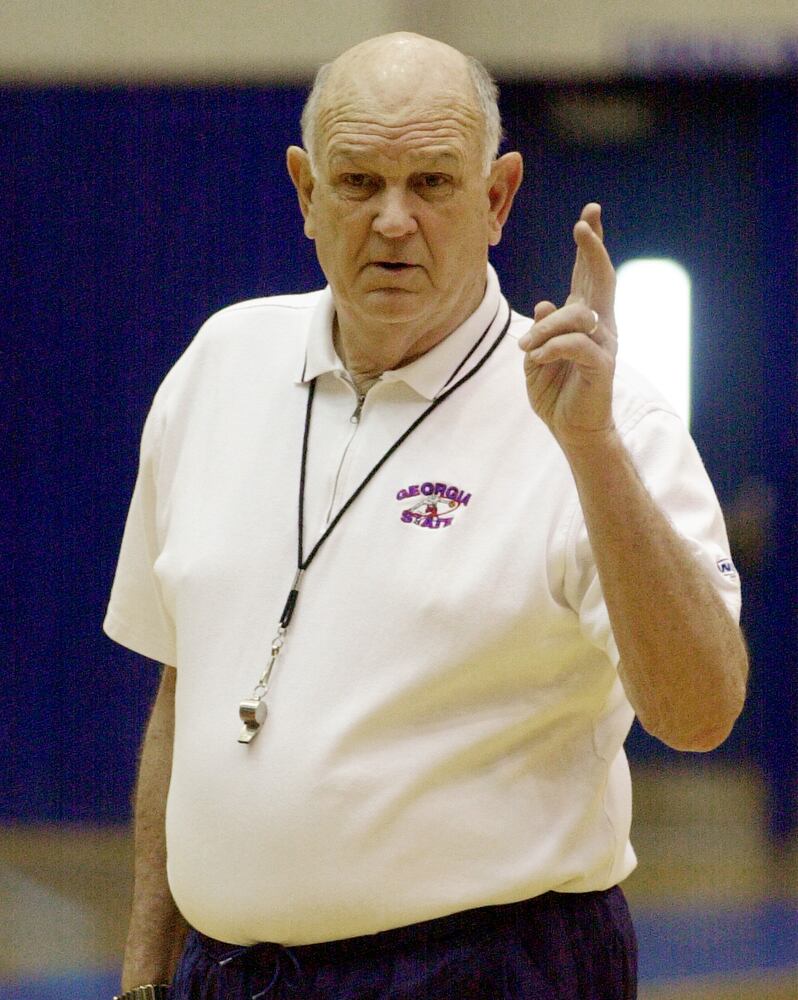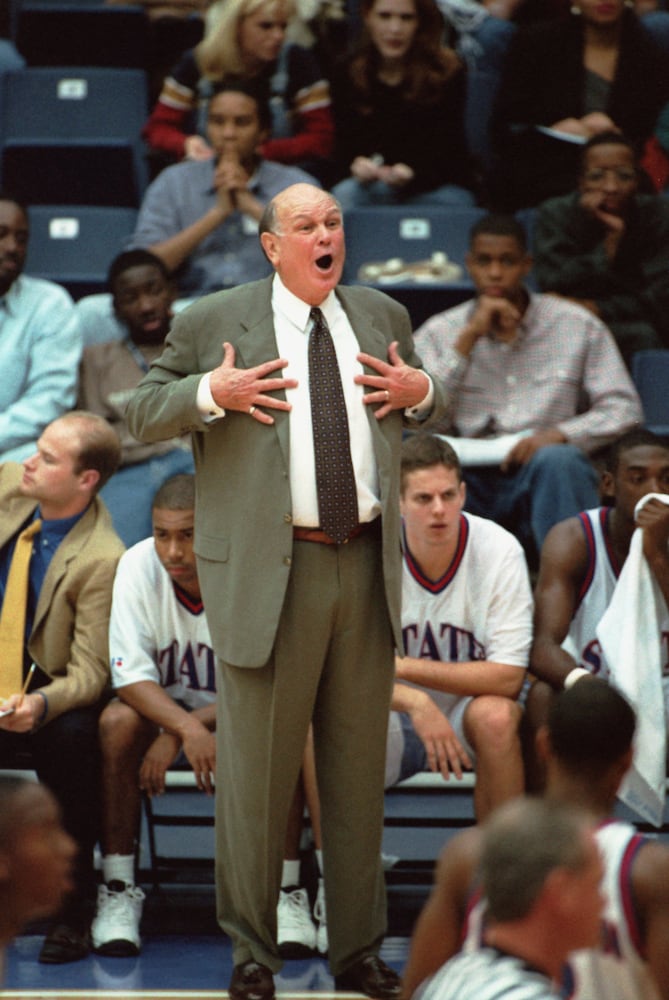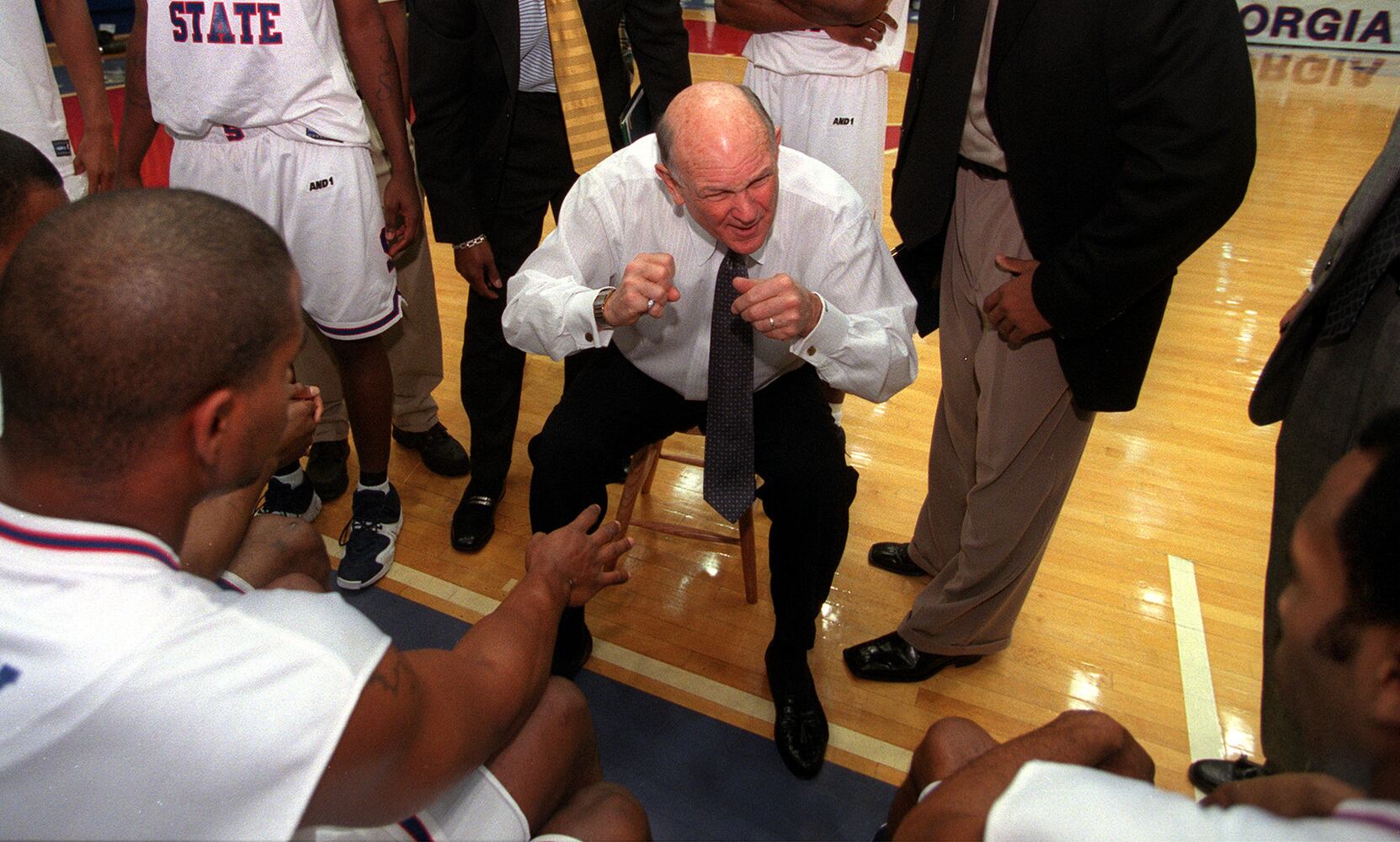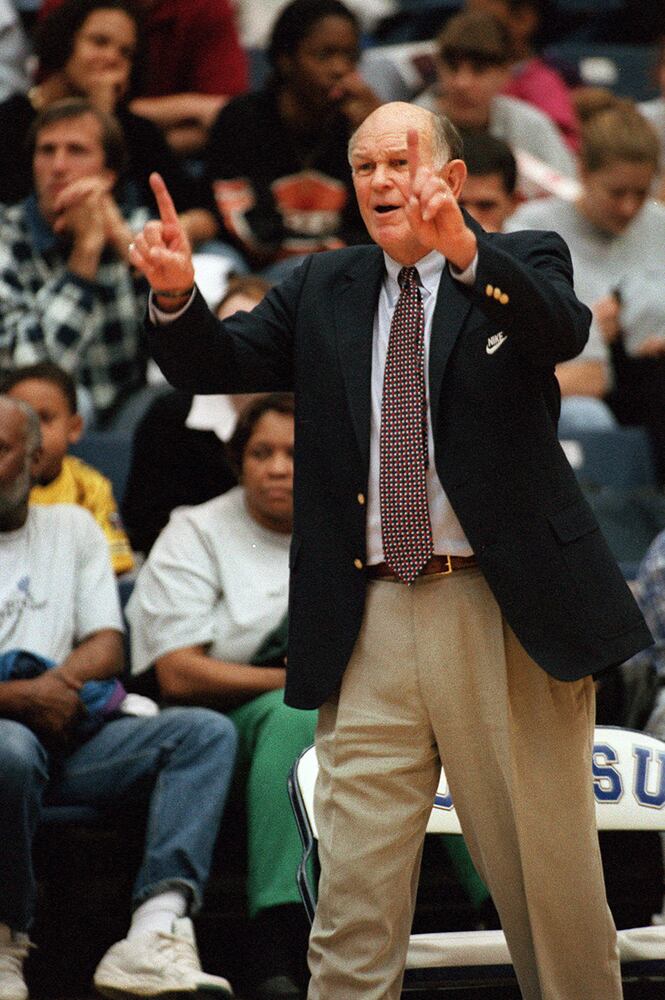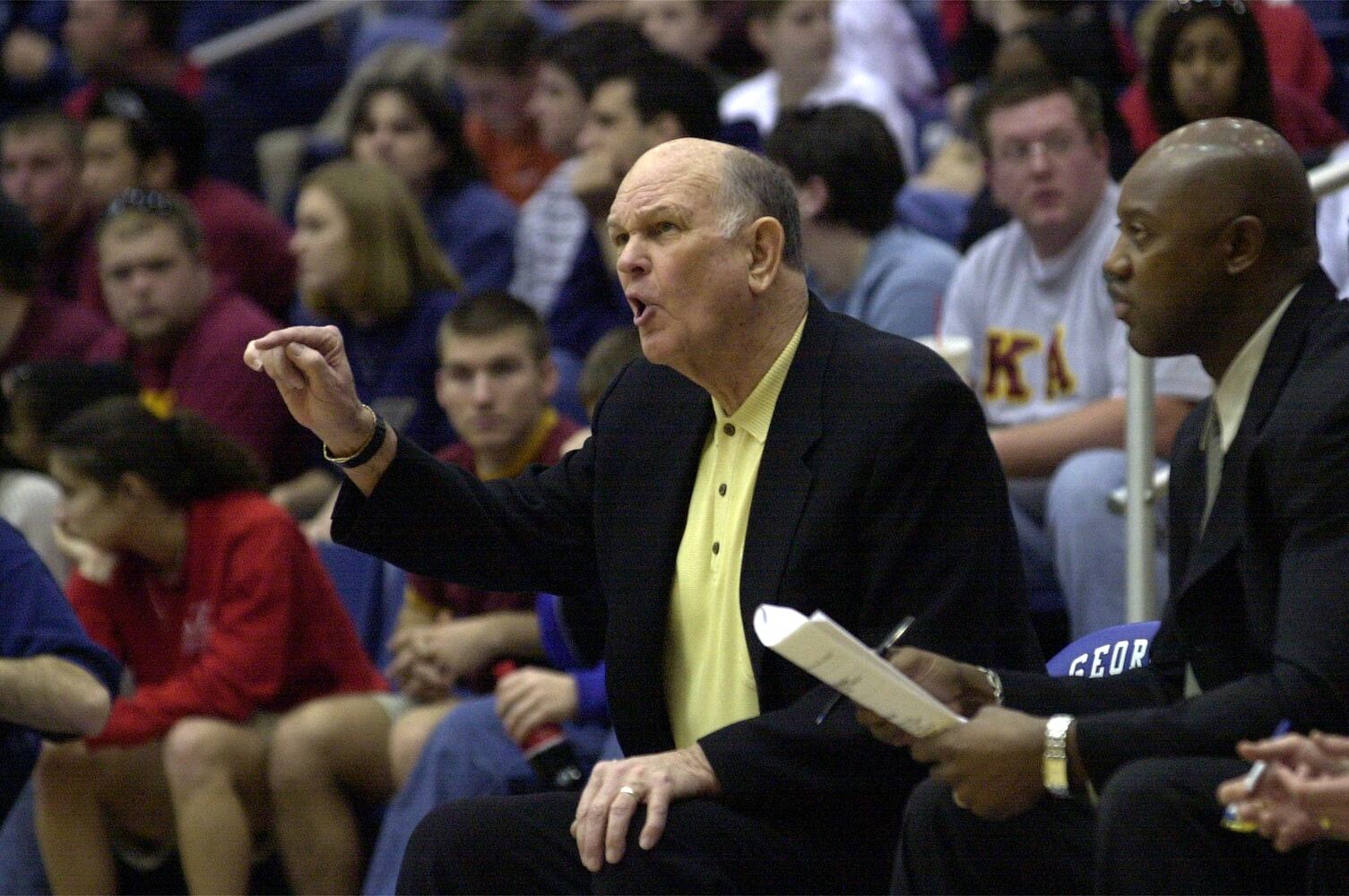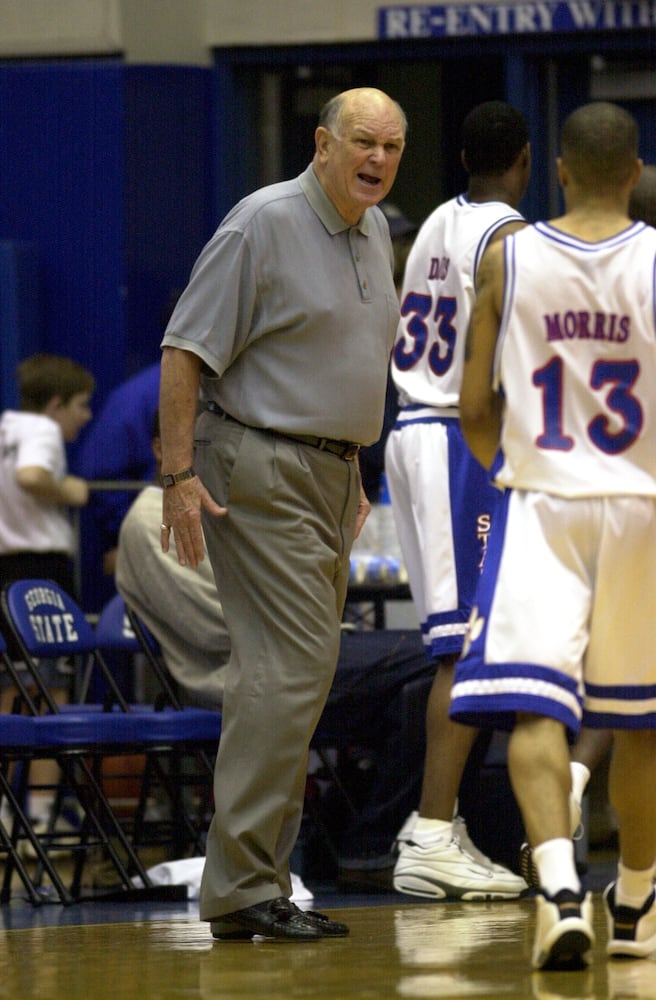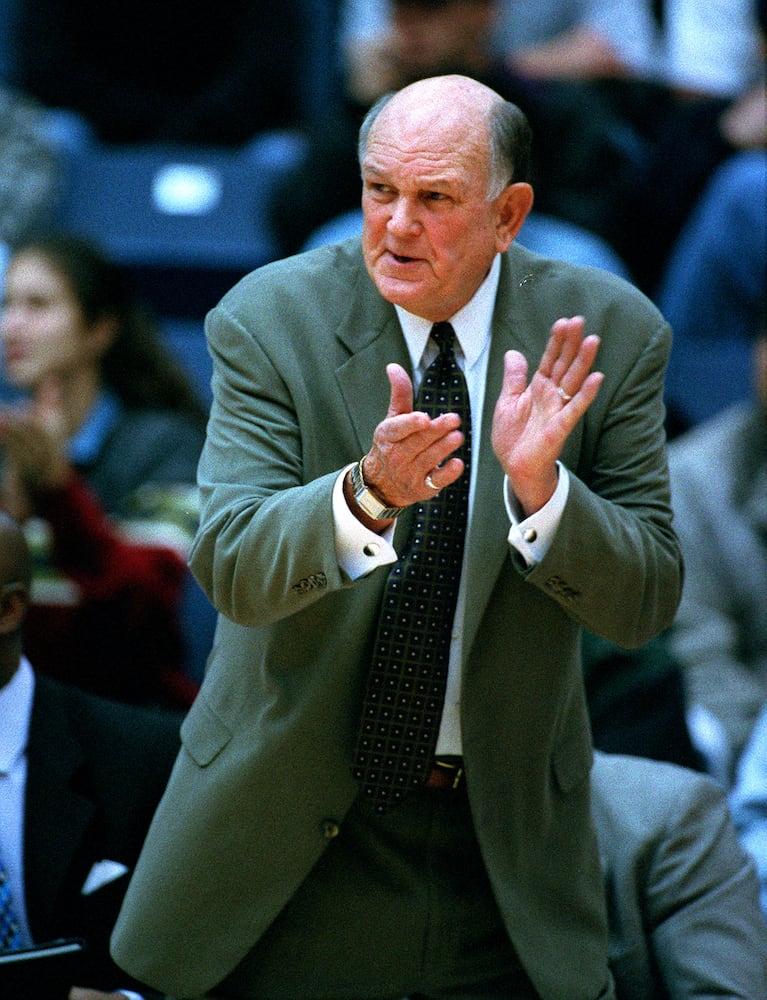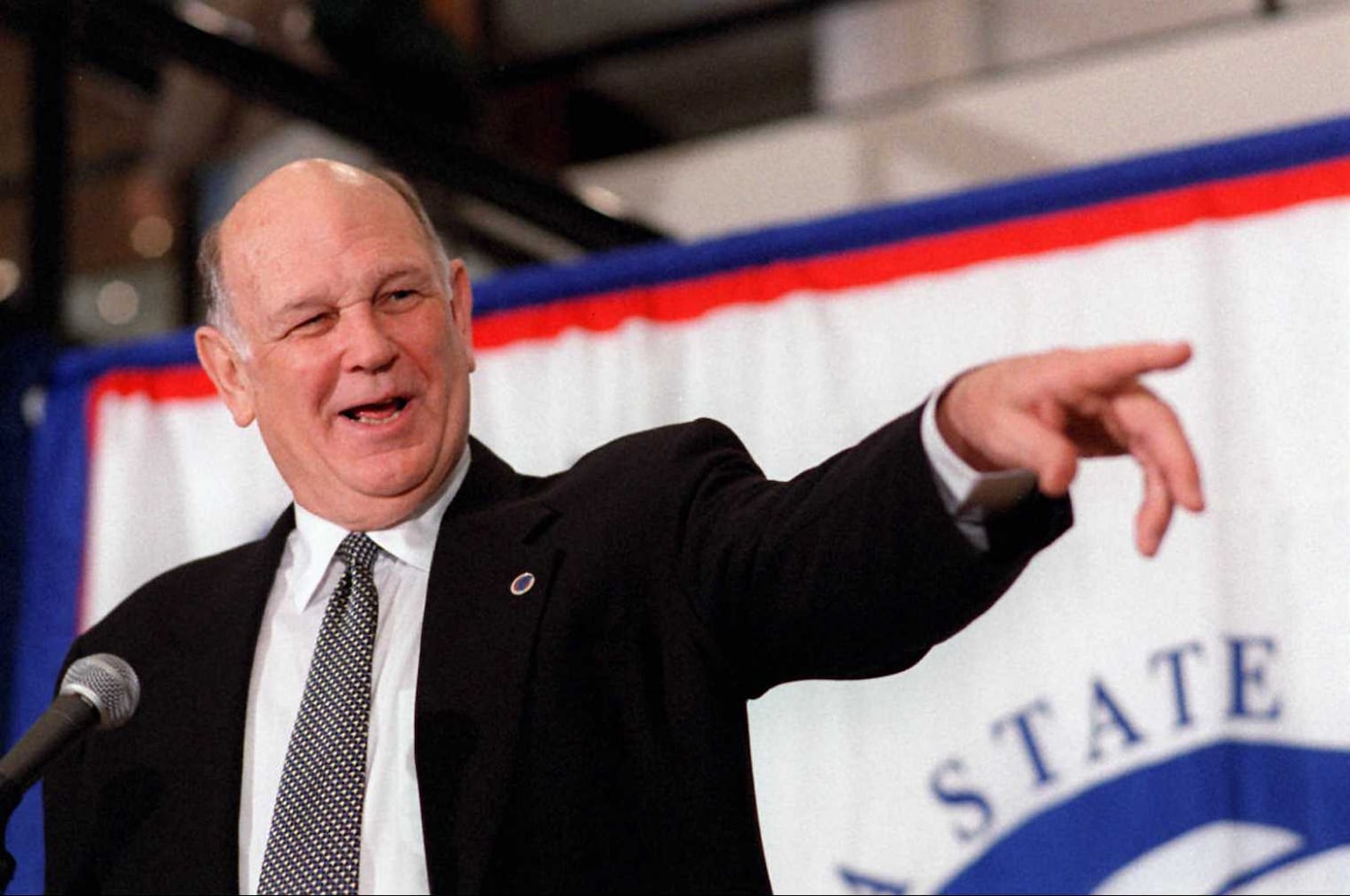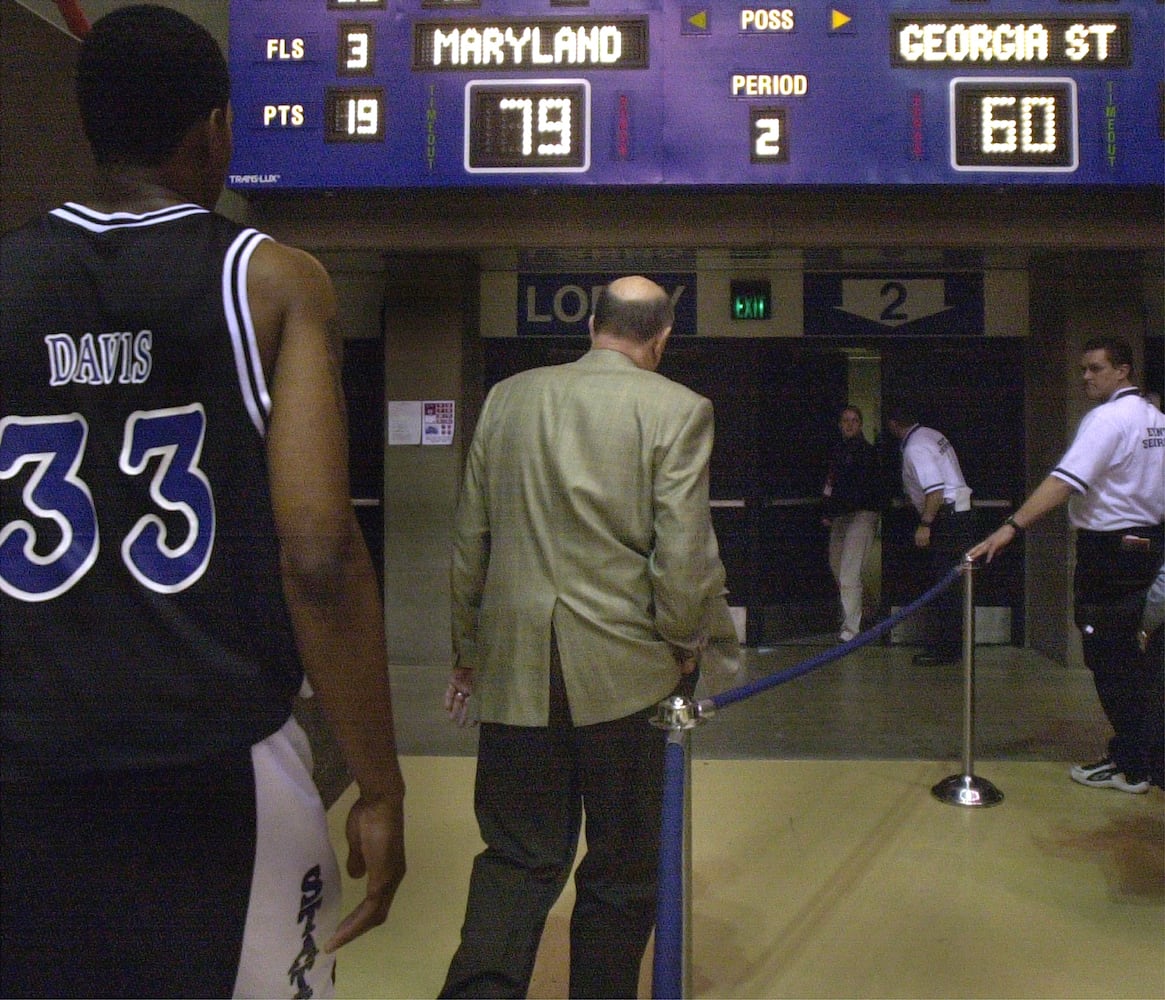Hall of Fame college basketball coach Charles “Lefty” Driesell, who won 786 career games while leading four Division I schools to reach 100 victories, died Saturday morning, his family announced. He was 92.
Driesell coached Division I for 41 seasons at Davidson, Maryland, James Madison and Georgia State. He finished his career at Georgia State, where he compiled a 103-59 record over six seasons before retiring in the middle of the 2003 season. Driesell was fourth in NCAA Division I career wins (786 total) behind only Bobby Knight, Adolph Rupp and Dean Smith when he voluntarily stepped down in midseason 2003, a week after his 71st birthday.
Driesell was elected to the Naismith Memorial Basketball Hall of Fame in 2018, at the age of 86. He was inducted into the College Basketball Hall of Fame in 2007. He is in the Hall of Fame at all four colleges he coached, as well as his college alma mater Duke.
Driesell was born Dec. 25, 1931, in Norfolk, Virginia. He gained his nickname at Granby High, where he met Joyce Gunter. They were married 70 years when she died in 2021 at their home in Virginia Beach. The couple had four children: Patti, Pam, Chuck and Carolyn; as well as 11 grandchildren.
Driesell played collegiately at Duke. After coaching high school, he got his first college head-coaching job in 1960 at Davidson. He then brought Maryland into national prominence from 1969-86, a stay that ended with the cocaine-induced death of All-American Len Bias. Driesell then won five regular-season conference titles over nine seasons at James Madison and finished with a successful run at Georgia State from 1997-2003.
At Georgia State, he took over a program in 1997-98 that had experienced little success, and he immediately elevated the profile and fortune of the school.
Driesell’s tenure at Georgia State was highlighted by a 29-5 record in 2000-01, when he guided the Panthers to conference regular-season and tournament championships and a stunning upset over No. 6 seed Wisconsin for the first NCAA Tournament win in school history. His Panthers also reached the NIT in 2001-02 after winning their third consecutive conference regular-season title.
“His contributions to the game go way beyond wins and losses, and he won a lot,” former Duke coach Mike Krzyzewski said after Driesell finally made the Naismith Memorial Basketball Hall of Fame. “It’s an honor he’s deserved for a long time.”
Driesell launched the college basketball tradition known as Midnight Madness on Oct. 15, 1971. At three minutes after midnight on the first day of practice as sanctioned by the NCAA, Driesell had his players take a mandatory mile run on the track inside the Maryland football stadium.
The lighting was provided by the headlights of a few cars parked at one end of the stadium. The motivation came from Driesell’s prodding and the estimated 800 students who gathered to watch the unpublicized event.
“I’ve done a lot of crazy things to get attention, but that wasn’t one of them,” Driesell said years later. “I was just trying to get an early jump on practice. I had no idea what it was going to lead to.”
His legacy included a lengthy list of players who went on to the NBA and an equally impressive roll of assistant coaches who became head coaches. When Driesell took the Maryland job in 1969, he hired George Raveling, the first black assistant coach in ACC history.
He was named conference Coach of the Year nine times in his NCAA career (at least once at all four schools). He produced his first 20-win season at age 31 in 1962-63 that would start his total of 22 seasons with 20-plus. And, basketball seasons were only 25 regular-season games for his first decades as a coach.
Driesell won the 16-team NIT Championship in 1972 at Madison Square Garden as the best 16 teams that did not qualify as tournament champion in the small 25-team NCAA Tournament fought for that respected prize.
When his fourth-ranked Maryland team in 1974 lost the ACC tournament final in OT to eventual NCAA champ N.C. State and didn’t qualify for the NCAA, that sparked the flame that expanded the NCAA field to 32 and then onward to its 68 today. That ACC tournament final still is considered one of the greatest college basketball games of all time.
Driesell also helped knock down racial barriers in the college game. He made Raveling the first Black coach in the ACC by hiring him as an assistant in 1969. Driesell’s effort to recruit Charlie Scott to play at Davidson helped make the future NBA star become the first Black scholarship athlete to attend North Carolina.
Scott initially committed to Davidson before choosing UNC but acknowledged that Driesell paved the way.
“I think if there had never been a Lefty Driesell, there would never have been a Charlie Scott attending North Carolina,” said Scott, who joined the Hall of Fame in 2018 with Driesell. “My commitment to go to Davidson really opened up all the other schools in the recruiting process.”
Race played no factor in Driesell’s effort to recruit the best players.
“He did so many great things in marketing the game and opened up so many doors for many African Americans players and coaches like myself,” said Len Elmore, who played for Driesell at Maryland from 1971-74. “Lefty was a trailblazer and an innovator.”
Credit: AJC
Credit: AJC
Walking onto the court at Maryland to the tune of “Hail to the Chief,” Driesell would thrust both arms in the air — two fingers extended on each hand with the ‘V’ for victory sign — amid a standing ovation. On the sideline, he would often stomp his foot to show his displeasure with a call, and if things got really intense he would peel off his sports jacket, toss it to the floor and trample it.
Yet, Driesell rarely raised his voice off the court and had a knack for charming the parents of potential recruits with an assuring, homespun style that smacked of his Southern roots.
“He had a big personality, was an excellent recruiter and he helped put Maryland basketball on the map,” said Brad Davis, a guard at Maryland from 1974-77 before heading to the NBA.
Driesell was inducted into the College Basketball Hall of Fame in 2007, but his entry into the Naismith shrine proved more elusive. He was a finalist four times before receiving the necessary 75% vote three months after his 86th birthday. The long snub, many speculated, came because Driesell was forced to resign at Maryland in 1986 after Bias overdosed on cocaine in a campus dorm after being drafted by the Boston Celtics.
Maryland had to pay Driesell for the rest of his 10-year contract because it could find no wrongdoing on his part. But his departure meant Driesell never got to fulfill the declaration he made upon taking over in College Park – he would make Maryland the “UCLA of the East.”
Under Driesell, the Terrapins didn’t enjoy the success John Wooden had at UCLA. Maryland failed to reach the Final Four during his 17-year stay, but the Terps won or shared five ACC regular-season titles and captured the league tournament in 1984 – on Driesell’s fifth trip to the final.
Looking back on his “UCLA of the East” boast, Driesell quipped: “I was kind of drunk or something when I said it. But we were pretty good, and we wound up pretty good. We had a lot of great players.”
Before Driesell arrived at Maryland, the team was an ACC doormat and had trouble drawing fans to old Cole Field House. After going 13-13 in Driesell’s first season, the Terps announced their resurgence Jan. 9, 1971, with a 31-30 overtime upset of No. 2 South Carolina at home. There was no shot clock then, so Driesell ordered his players to slow the game to a crawl against a team that had defeated Maryland 96-70 just three months earlier.
One of Driesell’s best teams never made it to the postseason. In the 1974 ACC tournament final, the fourth-ranked Terrapins lost in overtime to No. 1 North Carolina State 103-100 during a time when only the conference champion advanced to the NCAA Tournament.
A week later, a Maryland team featuring future NBA starters Tom McMillen, John Lucas and Elmore turned down a bid to the NIT, which it had won two years earlier. N.C. State went on to win the 1974 NCAA title, ending UCLA’s seven-year streak as national champions.
“Lefty’s team that year,” Krzyzewski said, “was probably as good as 20 national champions.”
Driesell grew up in Norfolk and was a star basketball player for Granby High in Norfolk before attending Duke.
After working at the Ford Motor Co., Driesell took a job as a junior varsity football and basketball coach at Granby in 1954 after convincing his wife, Joyce, that he could withstand the pay cut by also selling encyclopedias. He eventually was promoted to head coach of the varsity team before moving to Newport News High, where he won 57 consecutive games.
In 1960, he took a job at Davidson, which was coming off an 11th consecutive losing season. He went 9-14 in his debut, one of only two times over an entire season in which he would finish with a losing record as a college coach.
Driesell won three Southern Conference tournaments and five regular-season championships at Davidson over nine years and went 176-65 before he was hired at Maryland. He won 348 games with the Terrapins, a long-lasting school record that finally was broken in 2006 by Gary Williams.
Williams won the NCAA title in 2006. When he got home, a note from Driesell was waiting for him. It read: “Gary, YOU have made Maryland the UCLA of the East. Congratulations.”
After leaving Maryland, Driesell was hired in 1988 by James Madison, a small Virginia school that finished 10-18 in 1987. He went 16-14 in his first season, 20-11 in his second and led the Dukes to four consecutive NIT appearances before going to the NCAA Tournament in 1994.
Finally, at age 71, he retired while at Georgia State.
“I’m just tired and I’ve got this bad cold and I’m just going to retire,” Driesell said. “I’m looking forward to not having a job. I can get up when I want to and do what I want to.”
About the Author
Keep Reading
The Latest
Featured
